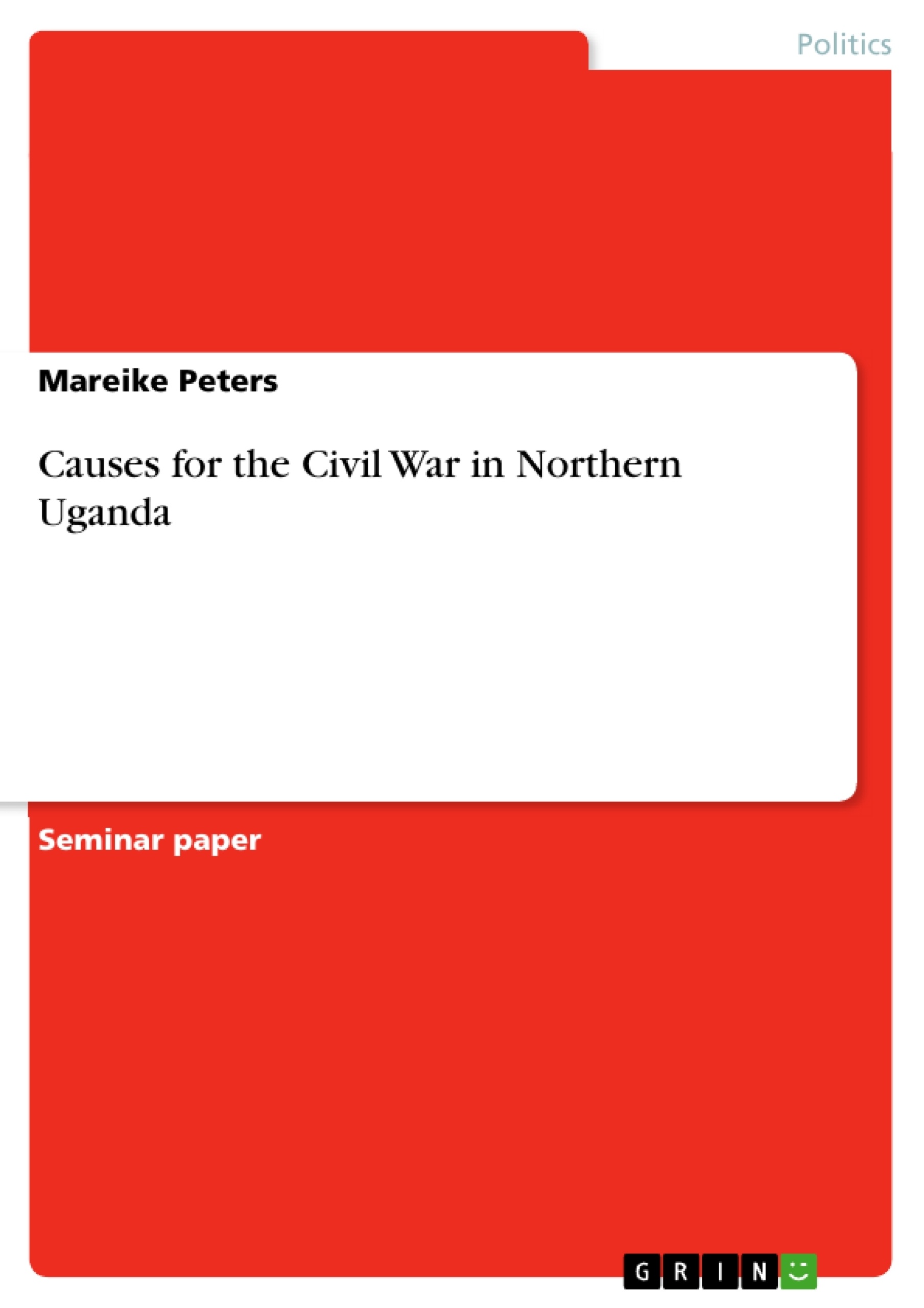Uganda, a landlocked country in Eastern Africa, has struggled with violent conflicts since the end of colonial rule in 1962. The emergence of the Lord’s Resistance Army (LRA) in 1987 in the northern region is one of the infamous examples of the violence the country had to endure. Since 2006, the LRA is no threat to Uganda anymore, as the movement withdraw to the neighbouring countries and has lost a significant amount of strength. Several scholars offered different explanations as to why the LRA was able to gain their power and remained to terrorize the Ugandan population for such a long period of time. Many believe that the spiritual system is the main driver behind the high number of fighters and the success of their leader Joseph Kony. But the use of extreme violence against the government military forces as well as against the civilian population is one of the aspects which let the LRA maintain their crusade. However, the strongest argument lies within the north-south divide of the country, which led to inequality and can be seen as one of the main reasons for the conflict. This paper will examine the causes for civil wars with the focus on the conflict in northern Uganda.
Table of Contents
- 1. Introduction
- 2. Theory of Civil Wars
- 2.1 Intrastate Wars
- 3. Case Study: Northern Uganda
- 3.1 The Political Situation after Independence
- 3.2 Resistance in Northern Uganda
- 3.2.1 The Holy Spirit Movement
- 3.2.2 The Lord's Resistance Army
- 4. Conclusion
- 5. References
Objectives and Key Themes
The paper aims to examine the causes of civil wars with a particular focus on the conflict in Northern Uganda. It explores the shift from traditional interstate wars to new wars, analyzes the underlying motivations for civil wars, and applies these theoretical frameworks to the case study of Northern Uganda.
- The transition from old wars to new wars.
- The characteristics and motivations behind civil wars.
- The political and historical context of Northern Uganda after independence.
- The emergence and impact of rebel movements in Northern Uganda.
- The role of inequality and the north-south divide in fueling conflict.
Chapter Summaries
The first chapter introduces the topic of civil wars in Uganda, focusing on the emergence of the Lord's Resistance Army (LRA) and its impact on the country. Chapter 2 delves into the theoretical framework of civil wars, discussing the shift from interstate wars to new wars and exploring the causes and motivations for internal conflicts. It analyzes the role of underlying factors and the changing nature of warfare. Chapter 3 applies the theoretical framework to the case study of Northern Uganda, examining the political situation after independence, the resistance movements, and the role of the Holy Spirit Movement and the Lord's Resistance Army.
Keywords
The primary keywords and focus topics of the text are: civil wars, intrastate conflicts, new wars, old wars, Northern Uganda, Lord's Resistance Army (LRA), Holy Spirit Movement (HSM), political instability, inequality, north-south divide, and resistance movements.
- Quote paper
- MA Mareike Peters (Author), 2016, Causes for the Civil War in Northern Uganda, Munich, GRIN Verlag, https://www.grin.com/document/592936



